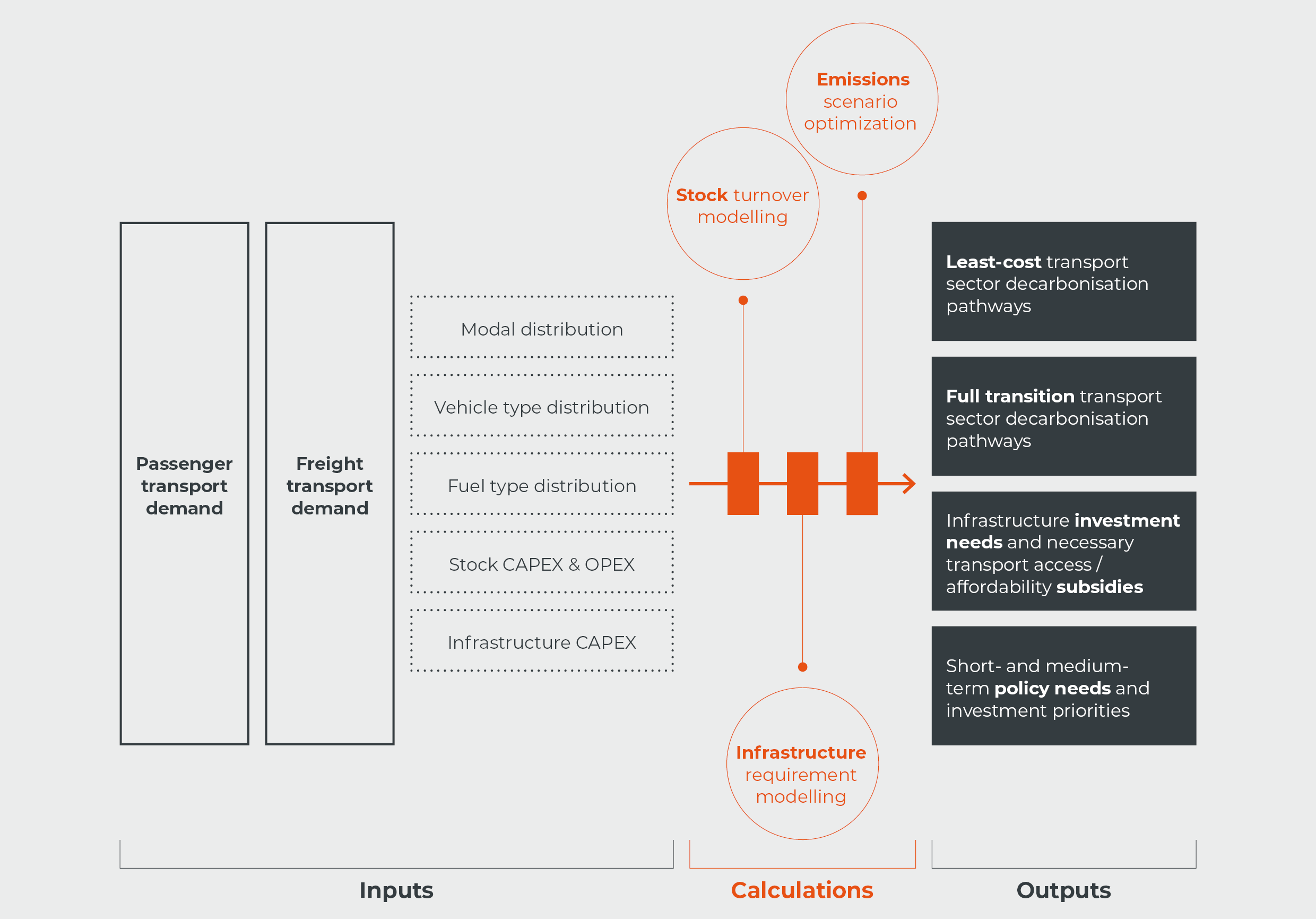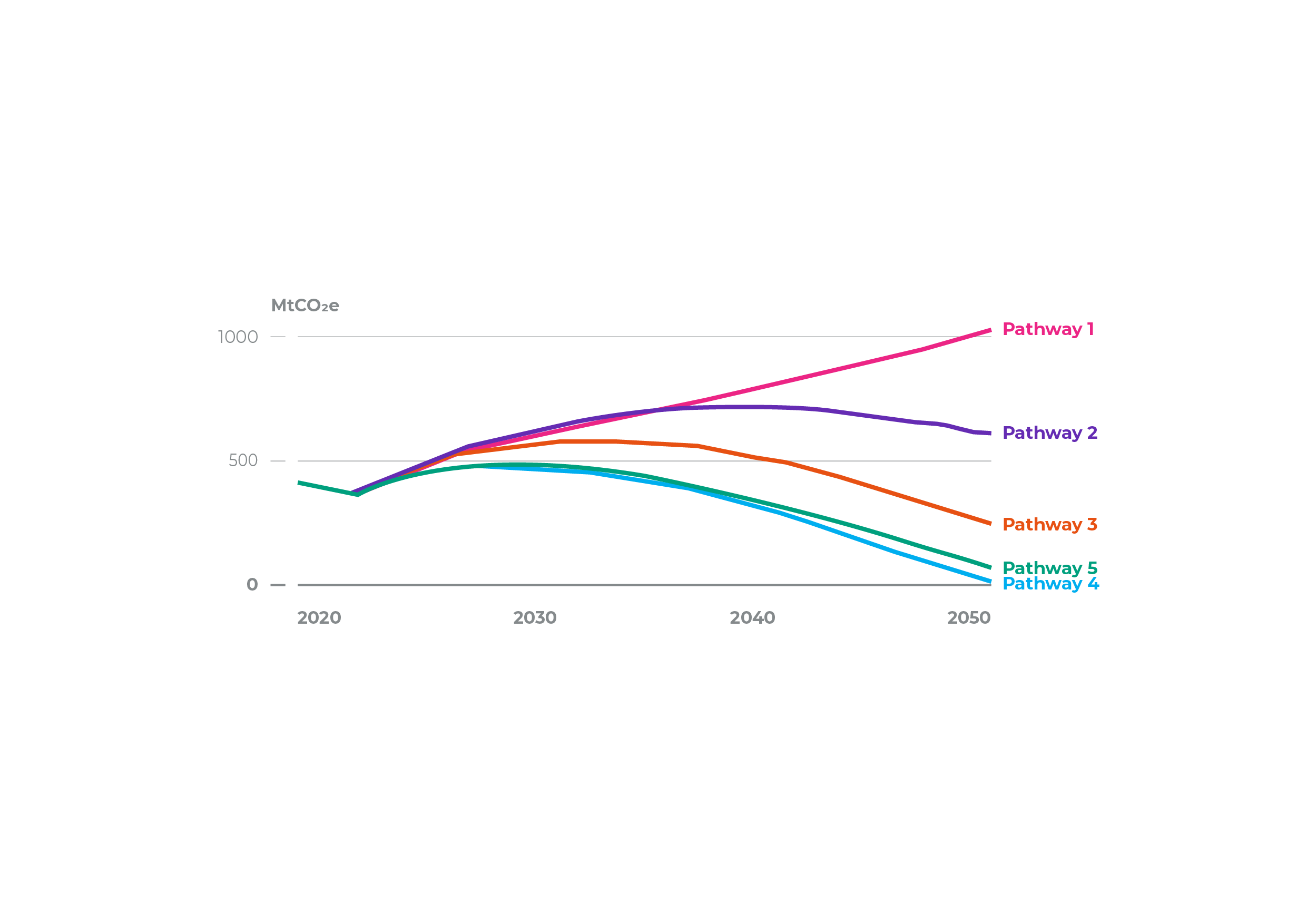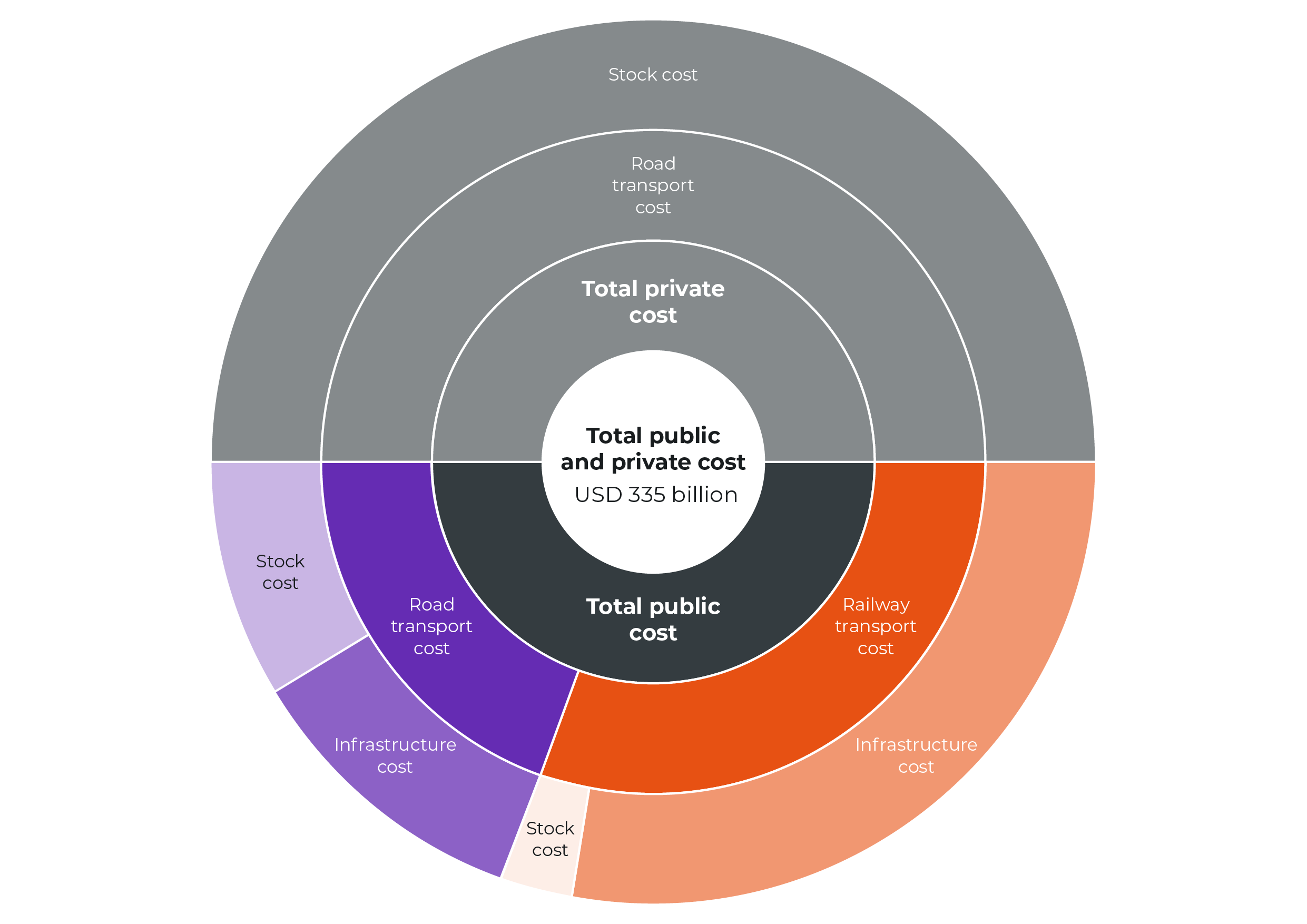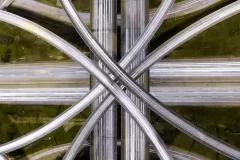Modelling alternative transport transition pathways and investment needs in India in the Transport Transition Pathway Explorer (TTPE)
India, currently the most populous country globally and the fourth-largest economy, is at a crucial juncture in achieving decarbonisation. At the core is its transport sector, which is responsible for about 14% of the country’s direct energy-related emissions. Despite commendable progress in reducing emissions intensity, India faces challenges in aligning its transport sector with a net-zero trajectory by 2070 or, ideally, 2050. The current transport landscape in India is characterized by challenges in accessibility, affordability, and sustainability, particularly impacting rural areas and low-income households. Road-based transport dominates, contributing significantly to air pollution and hindering progress in achieving sustainable development goals. The demand for private vehicles is growing, which cannot be reconciled with the objective of enabling transport access for all in a sustainable, convenient, efficient, and affordable manner. All of this highlights the need for a reconceptualization of India’s transport transition.
In this vein, this paper employs the Transport Transition Pathway Explorer (TTPE) to show options for a just transport transition in India, reconciling the twin goals of achieving climate goals and meeting sustainable development targets. Developed by NewClimate Institute, the TTPE is an open-source tool to model and compare normative pathways for a country’s transport sector transition. Covering various modes like road, non-motorized, railway, water, and air transport, the TTPE provides insights into mode distribution evolution and infrastructure needs, as well as emissions pathways and cost vectors, until 2050. Using the TTPE tool, we derived 5 scenarios exploring baseline development, least-cost options, and transition (decarbonisation) pathways for India’s transport sector transition in a bottom-up stock-turnover framework.

The analysis conducted using the TTPE tool reveals that India's current transport trajectory is not in line with a Paris-aligned just transition. A baseline pathway, which models the expected development of India's transport sector based on existing national baselines, projects substantial emissions growth and higher costs. While least-cost pathways, which aim to minimise either total system costs or public expenditure, reduce costs, they fall short of decarbonising the sector within timeframes compatible with the Paris Agreement. Transition pathways that assume decarbonisation of the power sector by either 2050 or 2070 show promise, indicating lower costs and emissions by shifting transport demand to public modes, particularly electrified rail.

For India to steer towards transition pathways, however, financial support is crucial. To put the sector on track towards achieving net-zero targets between 2050 and 2070, India needs significant public investments, estimated at around USD 164 billion per year (2020 USD) between 2023 and 2030. Public transport infrastructure and stock, especially for electrified rail and buses, require substantial upfront public expenditures. The role of climate finance is important in bridging the finance gap and supporting India's transition towards decarbonisation in the transport sector.

The transport transition in India would serve as a catalyst for sustainable development, offering substantial economic returns. A transport transition that leaves no one behind and facilitates affordable, convenient, and safe access to transport services in both rural and urban settings can reinforce progress towards a wide range of sustainable development goals, including poverty eradication. Large-scale infrastructure projects, as well as the ongoing development of the domestic automobile industry towards a global leadership position in electric vehicle production, are projected to also generate positive economic impacts by creating jobs and fostering economic growth. A push to transition transportation in India, focusing on reducing dependence on fossil fuels through modal shifts and electrification, can also greatly aid in decreasing the nation's heavy reliance on imports, particularly crude oil.




